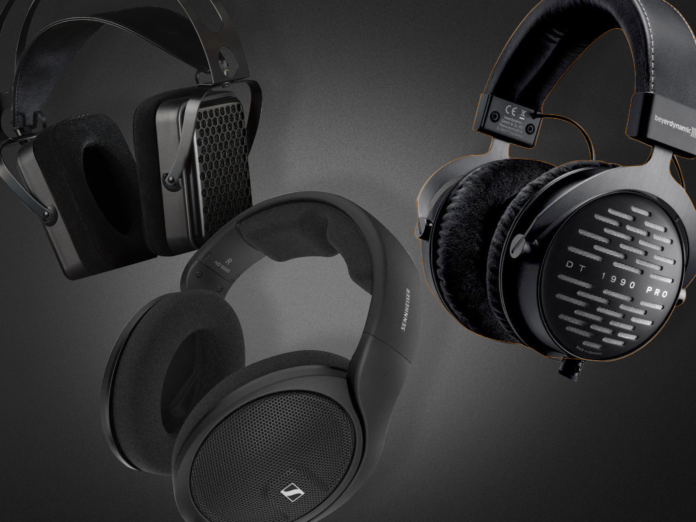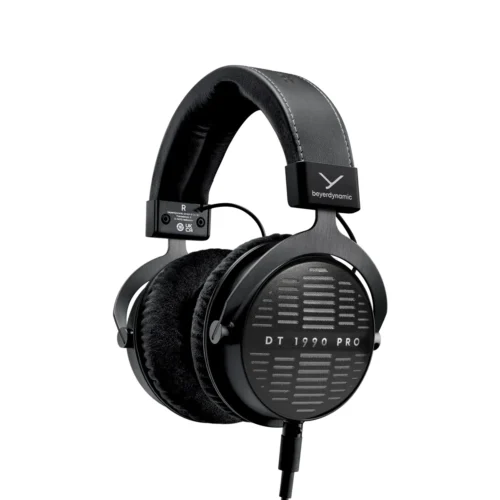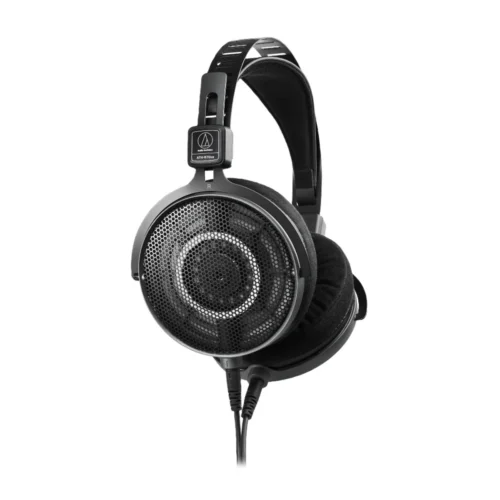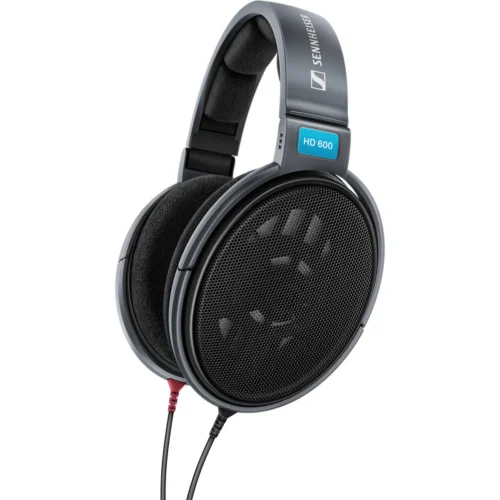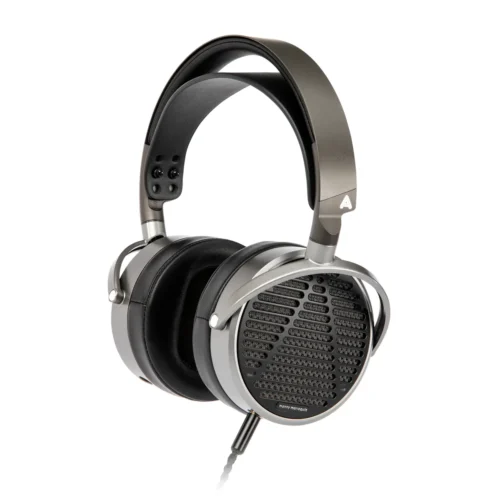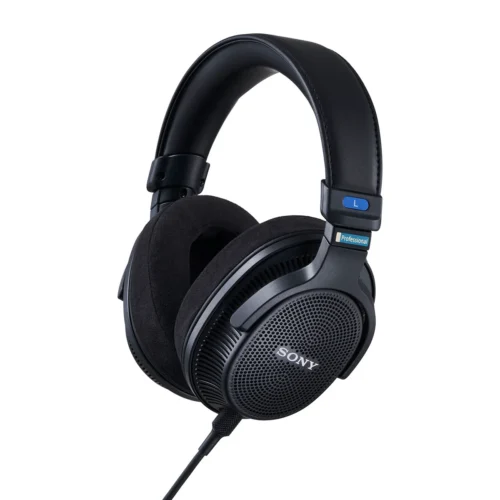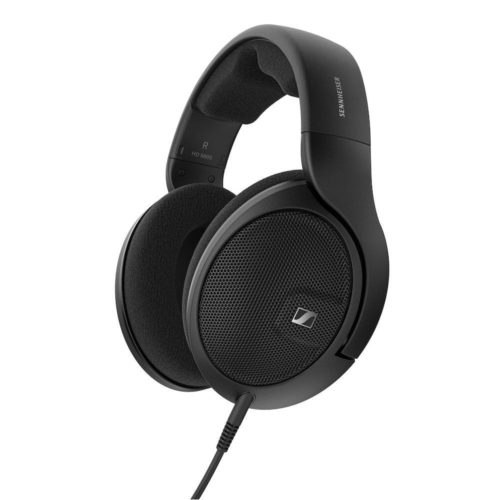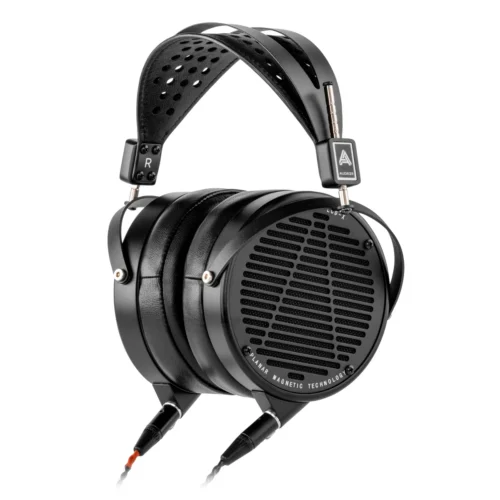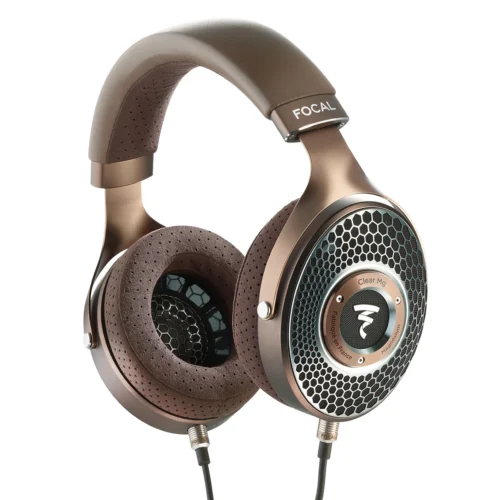Over the years, we have seen the release of a lot of open-back headphones. From audiophiles to casual listeners, this type of principle offers a lot of qualities for a variety of sonic scenarios. If you’re unfamiliar with open-backs, they’re over-ear headphones with open grills on the earcups. This allows sound to be pushed inward and outward from the diaphragm, resulting in a sound signature that has the opportunity to reveal a more spacious image. It’s almost like having a speaker attached directly to your ears. These are headphones meant for a more homely environment, not to be taken out on your morning commute, for example.
Open-back headphones occupy many different price ranges. There are affordable models like the Grado SR80e, and uber-high-end headphones like the Focal Utopia, or Final Audio D8000 Pro. No matter the price, each headphone will always have its own quirks and specific uses. Today, we will be looking at open-back headphones as a tool for sound mixers. What are the advantages, and which models best get the job done?
Open-Back Vs Closed Back For Sound Mixing
Closed-back dynamic headphones have been a staple of many studios for years. A few that come to mind are the Sennheiser HD 280 Pro, Sony MDR 7506, and Beyerdynamic DT 770 Pro. The goal of these headphones is to portray an accurate representation of what your track actually sounds like, with a flat, uncolored timbre. They’re especially good for recording, as you’ll be able to hear exactly what is being tracked without having sound leak into the mic. An open-back headphone can’t accomplish that.
Ideally, open-back headphones are best used in post-production, after all the tracks have been recorded onto the timeline.
Open-back Headphones vs Monitors
Although closed-backs have been used in plenty of mixing scenarios, open-backs have a few major advantages when it comes to efficiency. There’s a reason why professional sound mixers prefer monitors over headphones. Studio monitors are a perfect reference for where everything is in the mix spatially and volume-wise. They offer a closer, more critical view of what’s going on in your mix. However, monitors need to be in the right room in order to be accurate. That means your room must consist of the right isolation and absorption in order to work sufficiently.
Open-back headphones do not need the right room. Ideally, you’d still be in a relatively quiet environment, but you will not need the specific sound panels or dimensions in order to receive an accurate response. The best open-backs give you the luxury of feeling like you’re closer to the mix with a closed-back and delivering the open sensation of monitors. I won’t kid you though, in most mixing scenarios monitors are still king, but open-backs work as an alternative reference. If you’re worried about how valid open-backs are for production, just the other day I watched a video going through some of the processes of restoring movies for the Criterion Collection, and part of that is remastering the stems from the original film. The studio engineer wore open-back headphones throughout the whole process.
5 Open-Back Headphones for Mixing
Now for the reason you’re here. I have compiled a variety of open-back headphones that I think are an absolute must-buy for production. They range from affordable to high-end, so there’s an option for everyone. Let’s take a look at which headphones I think would make a great addition to your production space.
Beyerdynamic DT 1990 MKII
$599
The DT 1990 Pro MKII brings refinements to one of the most trusted open-back studio headphones ever made. With its updated tuning, the MKII version smooths out the upper mids and treble peaks of the original, resulting in a more balanced and less fatiguing presentation for extended listening sessions. The spacious stereo imaging and precise transient response make it an excellent tool for mixing, particularly in genres such as rock, acoustic, and orchestral. Detachable cables, two sets of earpads (analytical and balanced), and premium German construction round out a pro-level headphone that competes with much pricier models.
Audio-Techica ATH-R70xa
$379
The ATH-R70xa is Audio-Technica’s flagship open-back headphone, and it’s built from the ground up for professional reference. It offers an ultra-neutral frequency response with outstanding spatial definition, making it ideal for mixing and mastering tasks that require micro-level accuracy. Weighing just 210 grams and featuring a self-adjusting 3D wing headband, the R70xa provides exceptional long-term comfort. With a robust yet lightweight frame and 470-ohm impedance, it shines when paired with a proper amp and is a perfect reference monitor for detail-oriented producers and engineers.
Sennheiser HD 600
$499.95
A legend among open-back headphones, the HD 600 continues to set the standard for natural, accurate sound. Revered in both audiophile and professional audio circles, it’s known for its smooth midrange and honest tonality that make it ideal for critical mixing and mastering, especially in vocal-heavy productions. While it doesn’t have the widest soundstage, its imaging is pinpoint accurate. Durable construction and a modular design ensure the HD 600 remains a staple in studios around the world, even decades after its release.
Audeze MM-100
$399
The Audeze MM-100 brings planar magnetic precision to an accessible price point, crafted in collaboration with legendary engineer Manny Marroquin. Tuned for critical mixing and mastering, the MM-100 delivers tight bass, accurate mids, and crisp highs, all with the wide, immersive soundstage that planar fans expect. Unlike many other open-backs, the MM-100 is surprisingly forgiving of different sources, and it doesn’t require an expensive amp to shine. For producers and engineers who want a planar headphone that balances neutrality with musicality, the MM-100 is a top-tier contender under $500.
Sony MDR-MV1
$399
The Sony MDR-MV1 is a purpose-built open-back headphone designed specifically for immersive mixing, spatial audio, and reference-grade stereo work. It offers a spacious and transparent soundstage, with excellent separation that reveals subtle spatial cues—ideal for mixing in Dolby Atmos or other binaural formats. The tuning is neutral with a slight emphasis on clarity in the mids and highs, ensuring vocals and transient detail come through cleanly without harshness. Despite its studio focus, the MDR-MV1 is lightweight and extremely comfortable for long sessions, and its detachable cable and replaceable pads make it a practical tool for everyday pro use.
Sennheiser HD560s
$279.95
Here is a more recent option that’s more affordable if the DT 1990 is a little bit too much. Sennheiser is another manufacturer found in most studios today, but usually, other open-back models are recommended, such as the HD600 or 650. These are great options, but I wanted to spotlight the 560s for a specific reason. Out of all of their open-back models, I believe the 560s presents its reference with a much flatter response. In effect, the output is going to appear a lot blander and without much texture.
In my opinion, this invites more attention to the analytical details of the frequency response, encouraging you to add the texture to the mix yourself. For me, this is the open-back headphone I’d rather rely upon for my mixes, as the others feature more colorization than I’d prefer. Plus, the HD560s is only $199, which is great for mixers who may be on a budget.
Audeze LCD-X
$1,199
The Audeze LCD-X is a flagship-class planar magnetic headphone revered in both audiophile and professional audio circles for its precision and power. With a highly detailed and extended frequency response, it delivers ultra-clear transients, rich sub-bass, and transparent mids, making it a go-to choice for mixing engineers working on high-resolution or dynamic material. Its low impedance and high sensitivity mean it performs well even without a desktop amp, though it scales beautifully with one. Built like a tank and handcrafted in California, the LCD-X combines rugged studio reliability with audiophile-grade resolution for critical listening, mixing, and mastering at the highest level.
Focal Clear MG
$1,599
Lastly, we have another high-end headphone from a manufacturer that also specializes in studio monitors. Focal is notorious in the audiophile community for having some of the best high-end headphones around today, open and closed-back. The Clear MG uses an m-shaped magnesium driver for greater tonal balance and a fuller spectrum of frequencies. Focal brings over materials used in their monitors for their speaker drivers, bringing them closer to a studio reference experience.
The build of these headphones is also so solid that each Focal headphone literally uses the same exact construction, minus the Utopia. Its flat sound signature offers an uncompromised look into what is going on in your mix, providing an expansive stage for critical listening.
Summary
These selections are only a taste of what’s out there in terms of open-back headphones for mixing. Some of these picks might seem out of the ordinary, but I wanted to show how diverse the market really is, consisting of both affordable and high-end options that are all viable for a studio setting.
Discuss what open-back headphones you’re using on our forums here.
Find the best price at Audio 46.
MAJORHIFI may receive commissions from retail offers.


